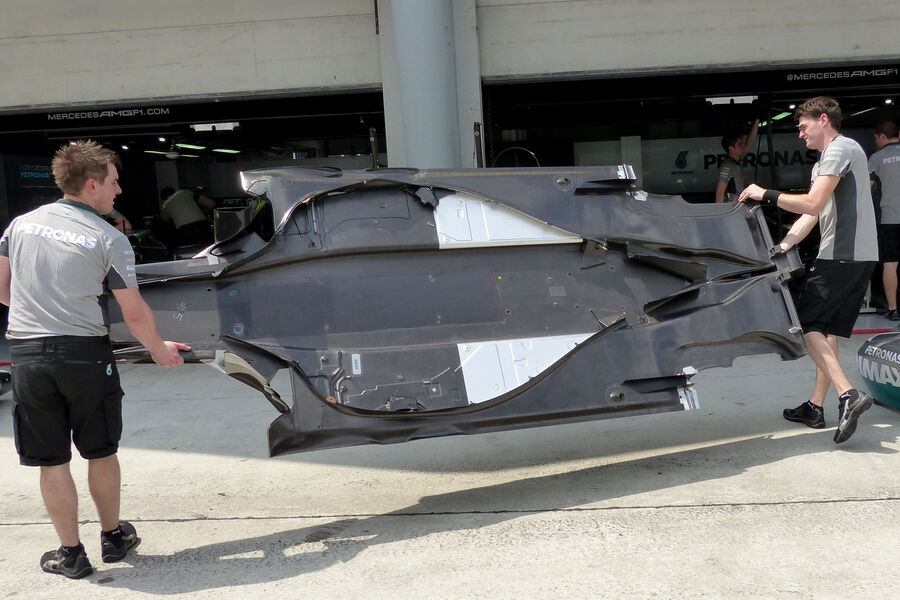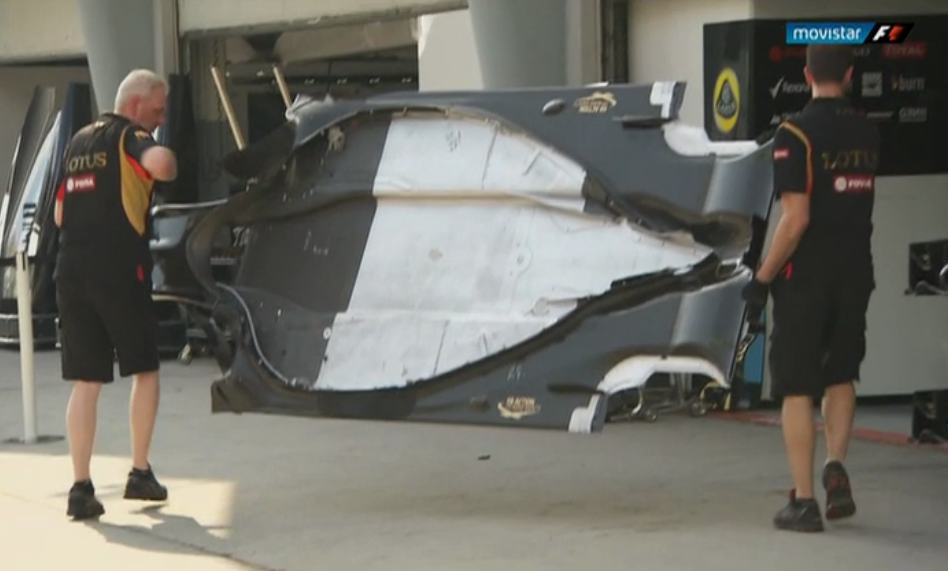Jef Patat wrote:beelsebob wrote:Okay, so I compared the two with the photos above. The angles are not the same, so it's not great, but the above-the-car angle of the lotus shot should give it an advantage, so I think we can get something useful from it...
http://cl.ly/image/2C3l0a2T1d15/Image%2 ... 4%20pm.png
I scaled the two to get the front wings the same length, so that we're looking at the areas at the front reasonably accurately.
The results – the area under the nose on the lotus – around 7000 pixels. The area under the nose on the McLaren - around 7000 pixels.
Given that the angle of the photo on the lotus is not exactly head on, it will make the height of the hole appear greater than it is, so I get from this that the gap in the nose on the McLaren is larger (but not hugely) than on the lotus.
I took the liberty of double checking: Lotus area: 7400, McLaren 6500
Hmm, we must have done our estimations in subtly different ways, the exact output of the sums that I did were 7030 to Lotus, and 6979 for McLaren.
I must admit that it 'felt' like a bigger difference. I still think though that the path of the airflow is less obstructed, clearer, in the case of the Lotus. With the McLaren, the channel tightens
Right, which is a good thing, that's a deliberate design to speed up the air flow. If you look at every 2013 car, you'll see that the channel under the nose tightens.
the anteater nose, will have some wake.
I have a feeling that that too is actually a good thing, it will draw more air in from the sides to fill that low pressure zone.
I think the airflow is better manageable in case of the Lotus.
This is where we really disagree – the McLaren seems closer to the 2013 designs, where they were able to optimally manage things, so I think most likely it's better managed under there.








